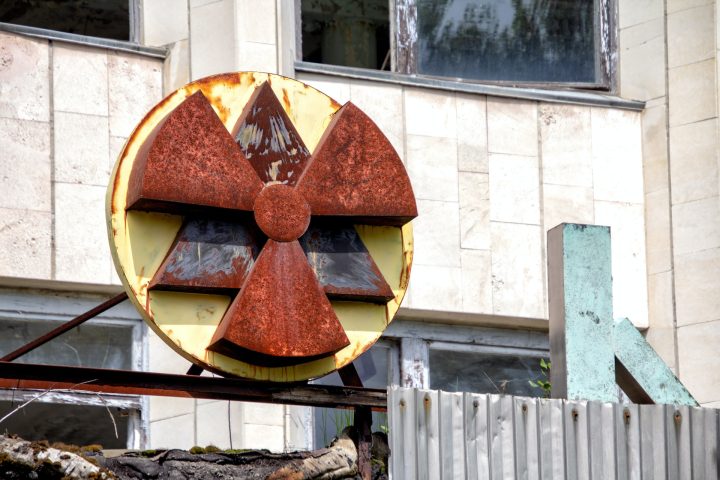
Amid North Korea’s recent cruise missile test, United States and South Korean officials held a simulated tabletop discussion over the possibility of a North Korean nuclear strike on 23 February 2023.
In January 2023, North Korean dictator Kim Jong-un ordered the “exponential” expansion of his country’s nuclear arsenal and the furtherance of the deliverability of intercontinental ballistic missiles following declaring his country a “permanent” nuclear power in 2022. Shortly after Kim Jong-un’s announcement, the Ministry of Defense of South Korea reiterated a warning that any use of nuclear weapons by North Korea “will lead to the end of the Kim Jong-un government.” The tension of a possible North Korean nuclear strike, however, continues to rise as North Korea test-fired four strategic cruise missiles during a drill in an obvious attempt to demonstrate its advancement of the deliverability of its nuclear weapons. While the US and South Korea continue to enhance their deterrence capability against potential North Korean nuclear strikes through joint military exercises and have warned Kim’s regime of the dooming consequences of any use of nuclear weapons on numerous occasions, the threat of a North Korean nuclear attack has only been rising since President Joe Biden took office, and there is little prospect for denuclearization in the foreseeable future.
North Korean denuclearization has been an urgent but long-existing global issue ever since the beginning of North Korea’s deliverable nuclear programs in 1959 when the North Korean government signed a nuclear cooperation agreement with the Soviet Union. The United States and North Korea have engaged in numerous negotiations, directly or indirectly, to address the issue of denuclearization over the decades with few concrete achievements. The United Nations and the United States have also imposed the toughest sanctions possible on the North Korean government that nearly completely exclude North Korea from international trade and finance. However, despite North Korea’s collapsing economy at home and its limited ability to feed its own people, North Korea has found ways to survive. With the help of its authoritarian allies, including China, Russia, Iran, and Venezuela, Kim Jung-un is capable of obtaining the necessary resources to continue the advancement of his nuclear, biological, and chemical weapon programs and maintain the minimum level of survival for his people at home. In addition, the humanitarian aid provided by international organizations and the South Korean government has also been exploited by Kim Jung-un to ensure his regime’s security, instead of improving the standard of living of his fellow countrymen.
From international sanctions to “strategic patience”; from third-party negotiations to direct diplomatic engagement, the “Rocket Man” with nuclear weapons as his security guarantee seems untouchable. On the one hand, North Korea’s nuclear, biological, and chemical weapons pose a constant threat to the national security of the United States and its allies. On the other hand, the doctrine of “use it or lose it” in the event of a US-led strike against North Korea’s nuclear facilities effectively increases the risk of a preemptive attack to disarm Kim’s regime. The South Korean government also fears a collapsed North Korea would bring the greatest refugee crisis that the world has ever seen. It looks like the “Rocket Man” has mastered his way to game the entire world.However, a practical risk assessment is inherently missing in the conversation about the US foreign policy toward North Korea. The North Korean government is a government that violates practically every single international agreement they have ever made. It is a government that is inherently untrustworthy, absent fundamental changes within its political system. Therefore, the issue of denuclearization is never about predicting Kim Jong-un’s next move or making an agreement with him on paper; rather, it should be an assessment of North Korea’s ultimate options in a goal-oriented fashion. The clear objective of disarming North Korea is, essentially, to remove North Korea’s nuclear, biological, and chemical weapons for good. However, from Kim Jong-un’s perspective, it is not difficult to comprehend that Kim believes that the moment he gives up his nuclear, biological, and chemical weapons, his regime is doomed. The complete abandoning of the nuclear programs accompanied by thorough and trustworthy inspections will, in Kim’s view, inevitably shake the very foundation of his totalitarian regime. Therefore, logic dictates that he will simply never dig his own grave by giving up his ultimate security guarantee. On the other hand, Kim Jong-un also understands that the moment he uses nuclear weapons, his regime is also doomed. However, this is no reason for maintaining the status quo. As former National Security Advisor Ambassador John Bolton acutely points out that time is always on the side of the proliferator, more time granted to Kim’s regime means more deliverable nuclear weapons, and hence, higher chances of a nuclear exchange. Therefore, maintaining the status quo by doing nothing
and hoping the problem would miraculously disappear is not an option. Hence, the whole policy debate regarding disarming North Korea through peaceful means is nothing more than an illusion. Rather, the real meaningful question to ask should be: should the use of force occur when North Korea is, at least, struggling to accurately deliver nuclear weapons to the United States homeland; or should the use of force be employed when North Korea is fully capable of striking the United States homeland with considerable accuracy?
